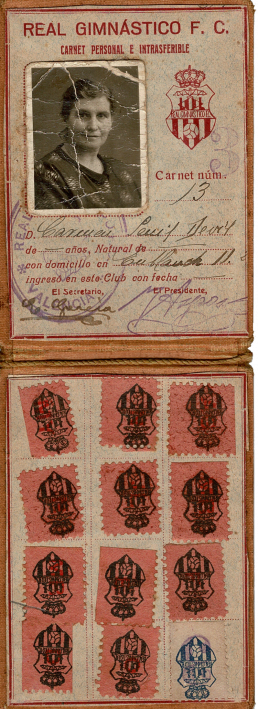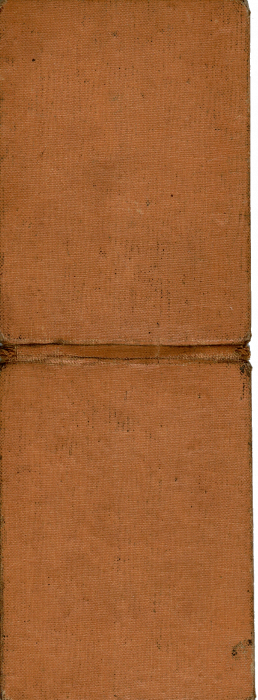Carmen Senis Devis was a staunch fan of Gimnástico F.C. The personal and non-transferable membership card that linked her to the world of Gimnástico F.C. says so and is corroborated by her family who, from generation to generation, have watched over and safeguarded a pass elevated to the category of authentic treasure due to the immense and undeniable sentimental value it possesses for her successors. This credential has transcended the passage of time to age with dignity as a vestige of the former dean of Valencian football. Alejandro Vidal Soler recalls the long journey to the present day.
“On the death of Carmen Senís Devís, the pass was kept by her daughter, Dolores Llorens Senís, and subsequently passed to Dolores Mota Llorens. She was very keen to keep it”. We set the action in 2012. The disappearance of her granddaughter in that year meant that the document moved to be looked after with zeal by her niece Lupe Pombo Mota. “She had no children and asked us to keep it and to see if there was any place where it was protected,” says Alejandro Vidal, Lupe Pombo’s husband. The Levante U.D. Virtual Museum acts as protective custodian. “As heirs of this document, we have decided that the Levante Museum is the best place to keep it”.
Carmen Senis Devis lost her senses for Gimnástico. Literally. Later she would passionately follow the adventures of Levante U.D. after the merger between Gimnástico F.C. and Levante F.C. at the end of the Civil War. “Her great-grandmother never missed a Gimnástico match at the Río Turia (Stadium). Later she moved to Vallejo. She used to go to the stadium alone”. There were no dykes to contain an enthusiasm that overflowed. “I knew and talked to all the Gimnástico players and didn’t eat dinner when the team was losing”. At the height of her footballing enthusiasm, she even had a parrot “who, when you arrived home, would greet you with the cry of Levante Gol”, recalls Vidal, emphasising the importance of football in Carmen Senis’ life.
The 13th member of Gimnástico F.C., with her personal and exclusive photo on the front of the document, must have been an example of daring and courage to break the rigid social rules that kept women away from the discipline of football at the time of its definitive establishment as a mass sport. In fact, the Gimnástico’s General Meeting of April 1923 excluded women and children under eight years of age as members, although they could enter the sports facility to follow the official matches if they were related to the members.
The pass offers an infinite number of indicators related to the history of Gimnástico. The address of Carmen Senis Devis, located in calle Enblanch 11, is not random. The dean nourished his ranks of followers attached to the Carmen neighbourhood and its adjacent areas. There is no visible chronological framework, but the document would have to be dated between the second half of the 1920s and the early 1930s. In this sequence, Gimnástico became Real Gimnástico after the granting of this title by the Royal Household in December 1926. The letterhead and the heading proudly show this privilege that would distinguish the institution until the advent of the Second Republic. The card is signed by Aspas as president and retains the stamps with the club’s coat of arms that were to be renewed monthly.

